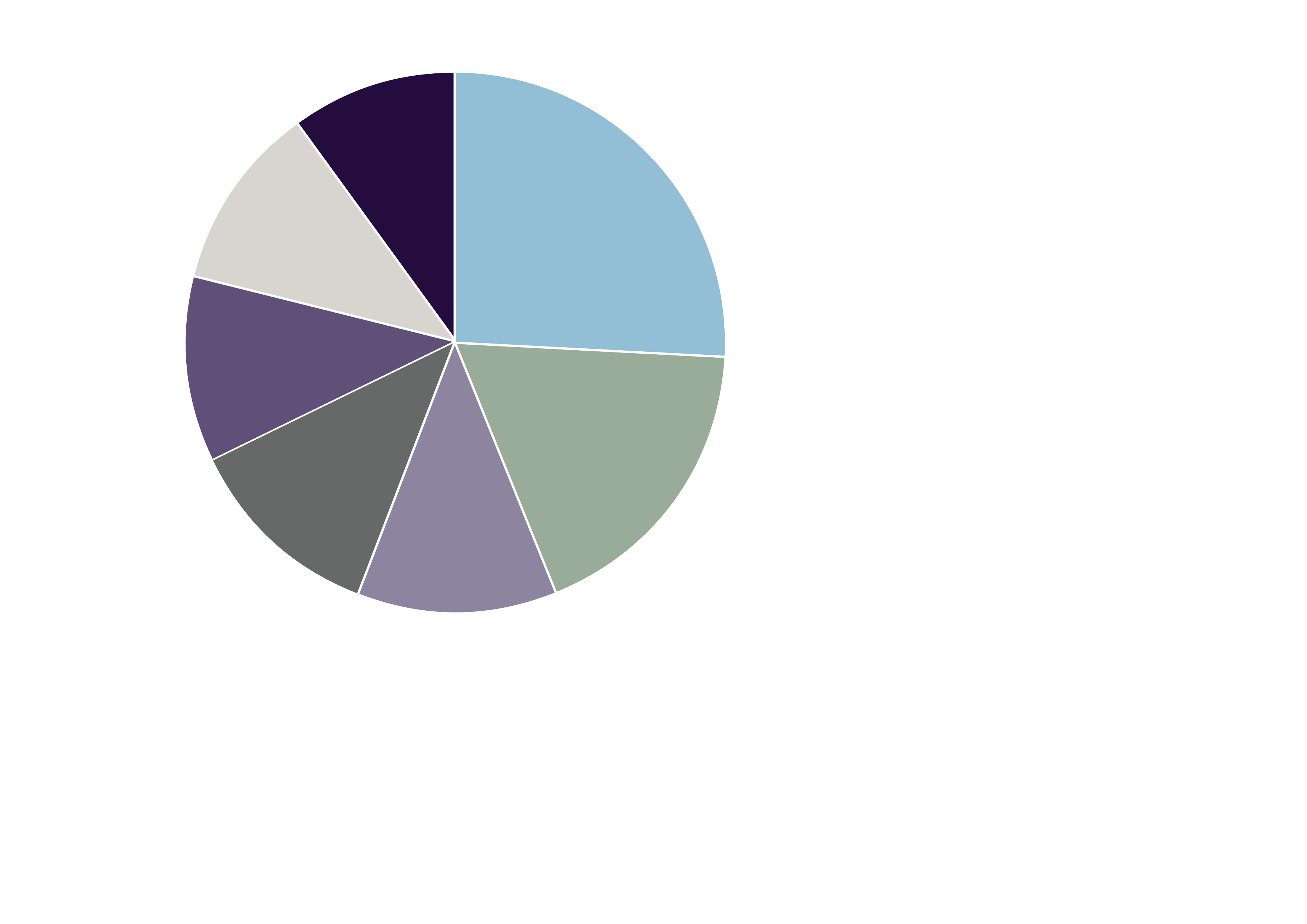
Tenant Insight
2022

Residential research
It has been two years since the start of the pandemic, and two years now of living and working in very different ways (for many, although by no means all). We therefore thought this is a good time to revisit and update our regular Tenant Survey, to help us understand whether our tenants are indeed living and working in new ways. Rising prices and rents along with changing preferences and priorities for living and working, have meant the private rented sector has undergone some big changes over the last two years.
In this survey we collected over 950 responses, including those living in city centre settings and rural locations; in flats and houses; and in converted and purpose-built properties.
“It is important for landlords to know what tenants desire, how they live and what they want out of a home in order to provide the best possible service and property.”
Lisa Simon
Partner, Head of Residential
Key findings


Hover over an icon below to find out more
Covid
Indoor space
High-speed broadband
Pets
Electric vehicle charging points
working hours
at home
One in five of our respondents said their most recent move was prompted due to pandemic-related reasons. The largest reason was for more space to better enable working from home.
Pandemic-related reasons aside, the desire for more indoor space or a larger property helped prompt the move for 15% of our survey participants.
The most essential amenity in a rental property, with 65% of contributors citing
it as ‘Essential’. Up from 45% just two years prior.
Allowing animals in a property is a strong consideration when factoring the desirability of a property to rent. Of our ten internal amenity choices, this came third from the top.
EV charging points, on-site concierge and on-site gyms came joint last in the list of external desirability, with all of these being neither ‘essential’ nor ‘important’ to many.
35% of all tenants are now spending most of their working hours at home, with 16% of respondents have increased the distance between their home and place of work.
Rental properties of the future, a tenant’s perspective
Three themes emerged from the comments section when asked what tenants would like to see in the private rented market going forward.
There were a wide variety of responses but the three key themes were:



Improved energy efficiency
Flexibility with internal decorations
Allowing pets
What prompts a property move?
Government restrictions and lockdowns associated with the pandemic impacted our lives in ways we hadn’t seen since wartimes. For many people and for many months the only ‘reprieve’ was the great outdoors, whether it be public or private space. The race for more indoor and outdoor living space helped prompt a mass departure from cities into the suburbs and countryside. Both the sales market and the private rental market experienced exceptionally strong demand as buyers and tenants looked to move.
“The largest proportion (26%) of those who answered ‘yes’, were driven to move in the search for more space to better enable working from home.”
The pandemic was not the only reason for moving and we wanted to dig deeper into discovering other potential motivations. The single largest answer was that people had simply relocated from elsewhere in the UK, with 16% saying this was a key reason for the move. The next most popular reason for a move was the desire for more indoor space or a larger property (15%) – again very similar to the pandemic-related answers for moving. This was followed by a career move (12%), and then access to private outside space (9%).


26%
Needed / wanted additional space to better enable working from home
18%
Access to private
outside space
12%
Employment status /
career change
12%
No longer required to be in that location (ie because now flexibly/hybrid working)
11%
Other
11%
Moved to be nearer
to family and friends
10%
To live in a more
rural location



Answering the question
What were your reasons for the move to your current property?
20%
18%
16%
14%
12%
10%
8%
6%
4%
2%
0%
Relocated
from
elsewhere
in the UK
More
indoor
space /
larger
property
Career
move
Other
Access to private
outside
space
Affordability
Improved proximity
to transport links
Improved quality of the interior
Poor
property management in previous property
To live
in a
more rural location
Over 40's
Under 40's
What amenities are important?
“The most essential amenity is high-speed broadband. Its importance however has increased substantially with 65% now rating this as essential compared with 45% in 2019”
The absolute necessity of having fast and reliable high-speed broadband connection in order to work from home has doubtless pushed this up the rankings for many. Energy efficiency has also moved up considerably, now being the second strongest in terms of ‘Essential’, with 34% of our participants marking it as such, compared with 21% in our previous survey in 2019. Finally, a property alarm has also moved up significantly over the last two years, moving from 8% of participants citing this as ‘Essential’ to over 20% now.
This year we added some new amenity options including allowing pets into the property which came in at a surprise third most ‘Essential’ for about 28% of our respondents. This was followed by additional space (which could be used for a home office, for example) with 24% saying this was ‘Essential’. The most marked ‘Not important’ items were home smart systems (such as Nest or Hive) followed by air conditioning / air purifying systems.
Turning to the external amenity options and here the most-cited ‘Essential’ response was allocated parking, where 47% said this was ‘Essential’
This figure was slightly skewed by those living in rural or village locations as 70% of those cited allocated parking as being ‘Essential’ compared with 38% of urban / city dwellers saying the same.
Private or communal outdoor space which was ‘Essential’ for 37% participants, up from around 21% in previous surveys who cited a ‘good size garden’ as being essential.
Hover over the graph below to discover which internal and external amenities are important to tenants


84% of tenants said energy efficiency of a rental unit was either essential or important
84%

Answering the question
Please rate the desirability for the following:





0%
10%
20%
30%
40%
60%
70%
80%
90%
50%
100%
High speed broadband
Energy efficiency
Allowing pets in the property
Additional space or area that can be used as a home office
Property alarm /
security measures
Digital media hub box
and USB ports in outlets
More environmentally
friendly property
Ability to make internal decorative changes
Air conditioning that includes an air purifying system
Home smart system
Internal
amenities
External
amenities
Clearly bicycle storage is more important for those living in city locations compared with rural locations. Outdoor space is only fractionally more important to rural / village dwellers (77% versus 65%) while electric vehicle charging points and on-site concierge and gyms are very much bottom of the list for importance for our survey contributors in both rural and urban settings.

Essential
Important

A welcome addition

Not Important

0%
10%
20%
30%
40%
60%
50%
70%
80%
90%
100%
Allocated parking
Private or communal outdoor space
Close proximity to
public transport links
Bicycle storage
Common areas for
leisure or workspace
Electric vehicle charging points
Essential
Important
A welcome addition
Not Important





On-site concierge
On-site gym
Build to Rent:
Tenant desires,
rental amenities,
and the long-term
alternative?
The changing desires of tenants are revealed in our rental customer survey results, but they reveal much more than a pandemic-driven shift towards more space, and a pattern of working from home.
High speed broadband has long been considered an essential for build-to-rent residents but has been one of a long list of amenities added to urban build to rent blocks by developers and operators alike.
The provision of space both internally and externally, the ability to work comfortably within your own home, have a pet and decorate as you wish, are all elements that when provided will no doubt drive tenant satisfaction, improved tenancy lengths, and overall return. The intangible benefits of longer stays from more settled and happier tenants can also not be overplayed.

Email me

Lee Richards
Partner, Head of BTR and PRS
07776 470858
The life work balance
The last two years have highlighted the new ‘life work balance’ as more people find that working from home has been not only perfectly achievable, but often brings a greater flexibility as well as more time to be with family and indulge in other non-work-related hobbies. According to our respondents, 35% are currently working most of their working hours inside the home / remotely, while a quarter of participants are now flexibly working, with an equal number of hours at home and outside the home.
Answering the question
On average, which of these statements best describes your typical work week?’
We were keen to find out whether flexible working and working from home policies adopted by many businesses during the pandemic lead to tenants moving further away from their workplace .
Tenants who said the distance between their home and place of work increased during the pandemic
16%




41%
I work most of my working hours outside the home
24%
I work an equal amount of my working hours outside the home and at home remotely
35%
I work most of my working hours at home remotely
Who did we survey?
Household type
Age range
Income
The majority of the rural respondents were made up of family households, at 44%, followed by two-person cohabitating couple households. While the majority household type in the city were couples (36%) and family households second at 25%.
Household type







Rural
100%
90%
80%
70%
60%
50%
40%
30%
20%
10%
0%
City






Family household
44%
25%
Couple
30%
36%

Single occupant
14%
19%

Professional sharers
6%
16%

Retired
6%
1%

Student(s)
1%
3%

16 -24 years
25 - 29 years
70%
60%
50%
40%
30%
20%
10%
0%



Age range
40 - 54 years
55 years and over
Rural
City
<£20,000
30%
25%
20%
15%
10%
5%
0%
Income


£20,000 - £30,000
£30,001 - £50,000
£50,001 - £70,000
£70,001 - £100,000
£100,001 - £150,000
£150,001 +
Average household income range
Examining the monthly gross household income to amount spent on rent every month, we found no change over the figure from 2019
The highest proportion of respondents were in the £30,001 - £50,000 per annum (per household) range. This is followed by 23% who earn between £50,001 and £70,000.
Average income spent
on rent per month
28%
There was a wider range of ages in the rural settings with almost an equal amount of those between 25-39, 40-54 and 55 years and over. Of the city dwellers however, there is a clear dominance of those in the younger age groups of between 25-39 years which makes up 61% of all contributors, compared with just 7% over the age of 55.
Incorporating things like energy efficiency and allowing pets and decoration will come with a cost either at the beginning or the end of a tenancy. However, with the ultimate goal for most landlords being to attract and retain good tenants, if tenants are happy and stay in their property for longer periods then the costs associated with some of these points ought to be considered good value for money. Alternatively, it may well be the case that many tenants will be willing to pay higher rents to live somewhere that allows pets and this should also be explored and considered.
For further information or to discuss your property or the market with one
of our experts please get in touch.
Book a complimentary market appraisal


View our available properties

Under other, relationship issues were most often cited as the cause for a move, followed by those who were asked to move as the landlord required the property back, followed by school catchment areas, and lastly waiting for a property purchase to go through.

Hover over the chart to find out more
Hover over the chart to find out more

Email me

Lisa Simon
Partner, Head of Residential
020 7518 3234

Download the full Tenant Insight report
This is the second survey in a row where this topic has come in near the top as most commented. Tenants cited enhancements such as solar panel installation, more sophisticated heating, electric charging points, improved insulation, and most notably double glazing.
Many tenants find the inability to do their own redecorations creates a disconnect with the property. Being allowed to make decorating decisions will go some way to retaining tenants and allowing them to feel more devotion to their home.
This point was mentioned over 30 times in our comment section. Allowing pets in rental properties would help make a rental property stand out from the crowd.
Data taken from survey of 984 Carter Jonas tenants, January 2022


Indoor space


Covid

Pets
ELECTRIC VEHICLE CHARGING POINTS

26%
18%
12%
12%
11%
11%
10%
Needed / wanted additional space to better enable working from home
Access to private outdoor space
Employment status / career change
No longer required to be in that location (ie because now flexibly / hybrid working)
Other
Moved to be nearer to family and friends
To live in a more rural location
0%

41%
I work most of my working hours outside the home
24%
35%
I work an equal amount of my working hours outside the home and at home remotely
I work most of my working hours at home remotely
View this page on desktop for more information about the tenant profile














